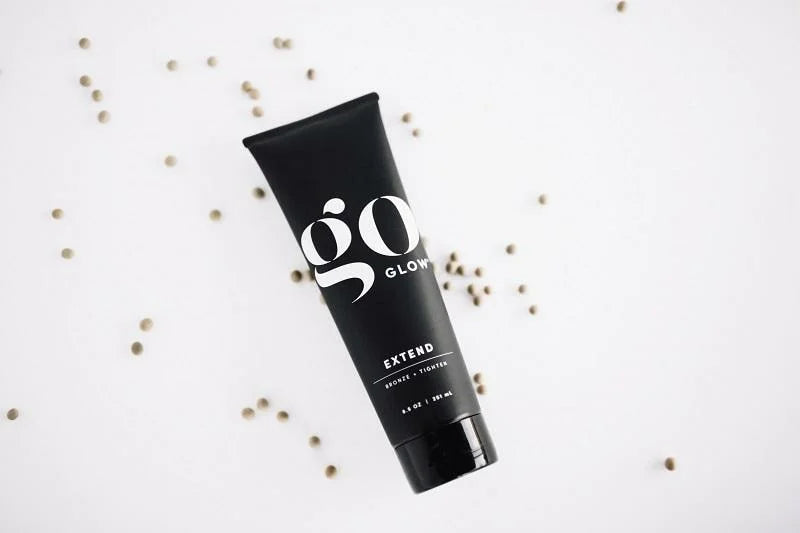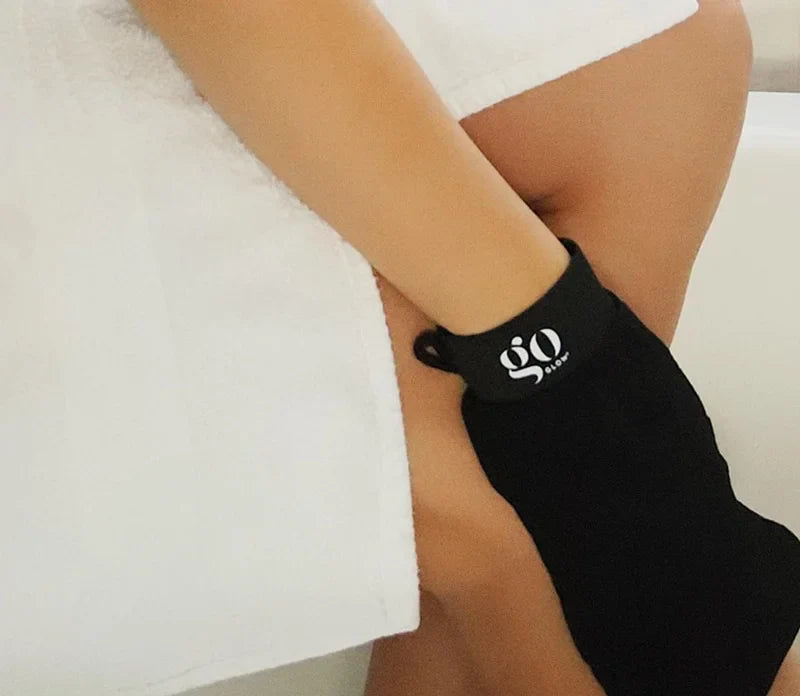When it comes to skin health and choosing skin care products, it’s essential to understand your skin’s specific needs. Dry and dehydrated skin have distinct needs, meaning each condition requires a tailored approach to achieve optimal results. Two commonly confused conditions are dry skin and dehydrated skin. While they may share some similarities, they are distinct issues that require different approaches for effective treatment. Both dehydrated and dry skin have unique characteristics and require different care strategies to address their specific concerns. In this blog post, we’ll go into the differences between dry skin and dehydrated skin, helping you identify which one you may be dealing with and how to care for your skin accordingly using goGLOW products!
What is Dry Skin?
Dry skin is a skin type, just like oily, normal, or sensitive skin, often characterized by a lack of natural oils or lipids that keep the skin barrier (stratum corneum) hydrated and protected. Dry skin is lacking oil, which distinguishes it from dehydrated skin—a temporary condition that is lacking water instead of oil. The lack of oils and fats can be because of either a skin condition or genetics that causes sebum production (natural skin oils) from the sebaceous glands to be reduced or almost stopped. It might even be a reaction to another substance on the skin or lifestyle.
Some key characteristics of dry skin include:
- Texture: Dry skin often feels rough and may appear flaky or scaly.
- Tightness: You may experience a sensation of tightness after cleansing or throughout the day.
- Redness and Irritation: Dry skin can be prone to redness, itching, and irritation.
- Fine Lines and Cracks: The absence of adequate moisture can lead to premature fine lines and cracks in the skin.
- Dull Appearance: Skin dryness may result in a lack of the healthy glow that well-moisturized skin has.
What Is Dehydrated Skin?
Dehydrated skin, on the other hand, is a condition that can affect any skin type, including oily and combination skin. When the skin is dehydrated, it lacks water or moisture within the skin, not just the skin barrier, even if the skin’s oil production is normal. This is more seasonal and can be affected by weather, climate change, travel (airplanes), pollution, UV rays or sun exposure, and changes in medications or hormones.
Key indicators of dehydrated skin include:
- Feeling Tight and Itchy*:* Dehydrated skin can feel tight, itchy, or uncomfortable. Use the pinch test to measure skin elasticity, which can tell you a lot about hydration levels.
- Dullness: It often appears dull, lacking the natural radiance associated with well-hydrated skin.
- Increased Sensitivity: Dehydrated skin may become more sensitive and prone to redness.
- Fine Lines and Wrinkles: Lack of hydration can exaggerate the appearance of fine lines and wrinkles.
- Uneven Texture: The skin’s texture might be uneven, with noticeable dry patches.
- Feels Oily and Dry: Dehydrated skin can sometimes feel oily and dry at the same time. This sensation is a symptom of dehydration rather than excess oil production.
Distinguishing Between the Two
A simple test can be helpful in determining whether you have dry skin or dehydrated skin. Wash your face or body gently, pat it dry, and wait for about 30 minutes. If your skin feels tight, rough, and shows signs of discomfort, you likely have a dry skin type. You can tell if your skin is dry or dehydrated by observing these symptoms and performing this self-assessment.
However, if your skin feels tight but not dry, and the discomfort dissipates after applying a hydrating product, you probably have dehydrated skin. Unlike dry skin, dehydration is a temporary condition caused by water loss rather than a chronic lack of oil. Dehydrated skin can affect any skin type; even oily skin can experience dehydration, so it’s important to understand the difference.
Causes of Dry and Dehydrated Skin
Understanding what leads to dry and dehydrated skin is the first step toward achieving healthy looking skin. Dry skin is often a skin type determined by genetics, meaning your skin naturally produces less sebum and fewer natural oils. This makes it more prone to feeling rough, tight, and flaky. On the other hand, dehydrated skin is a temporary condition that can affect any skin type—including oily or combination skin—and is caused by a lack of water in the skin’s surface layers.
External factors play a major role in both conditions. Hot showers, harsh skincare products, and frequent sun exposure can strip away the skin’s natural oils, leaving it dry and vulnerable. Cold weather and UV rays can also weaken the skin barrier, making it harder for your skin to retain moisture. For dehydrated skin, environmental factors like indoor heating, air conditioning, and harsh exfoliants can draw water out of the skin, leading to a dull complexion and increased sensitivity. Even not drinking enough water can leave your skin dehydrated.
By identifying these triggers, you can adjust your skincare routine and daily habits to better protect your skin from dryness and dehydration.
The Pinch Test: How to Tell the Difference
If you’re unsure whether you’re dealing with dry or dehydrated skin, the pinch test is a quick and easy way to find out. Simply use your thumb and forefinger to gently pinch the skin on your cheek, then release. Watch how your skin responds: if it takes a few moments (a few seconds) to bounce back to its original position, your skin is likely dehydrated. Dehydrated skin lacks water, so it doesn’t spring back as quickly.
In contrast, if your skin snaps back right away but still feels tight, rough, or flaky, you may have dry skin. Dry skin is more about a lack of natural oils, while dehydrated skin is about water loss. Dehydrated skin may also show temporary fine lines and a dull appearance, while dry skin often has a rough texture and persistent tightness. Using the pinch test can help you tailor your skincare routine to address your specific skin concern and achieve a radiant glow.
Treatment Options for Both Skin Conditions
Treating dry and dehydrated skin requires different approaches, although first and foremost, make sure to ask your physician for a dermatological diagnostic if you’re suffering from persistent or severe instances of dry skin.
It is important to use targeted solutions tailored to the specific needs of dry and dehydrated skin for optimal results.
How to Treat Dry Skin
- Use rich, emollient moisturizers to replenish lost lipids and fatty acids. A moisturizer not only hydrates but also helps to strengthen the skin barrier and prevent water loss, making it essential for dry skin. goGLOW HYDRATE lotion features argan oil and hemp seed oil, which are both great sources of omega fatty acids, vitamin E, and linoleic acids, all of which act to hydrate the stratum corneum of the skin, soothe dry spots, and even minimize acne. The lotion is also rich in organic rose hip oil, which can combine with Vitamin A to improve skin tone, texture, and pigmentation.
- Look for products with ingredients like ceramides, Vitamin C, hydrating serums, shea butter, and hyaluronic acid. Shea butter is also a star in HYDRATE, which is rich in essential fatty acids and vitamins.
- Avoid harsh cleansers and hot water, which can strip natural oils. Using goGLOW CLEANSE in the shower can help minimize dry skin, as CLEANSE is a naturally pH-balanced product with no irritants or sulfates, which are known for stripping the skin’s natural oils. For gentle and effective cleansing, consider a cleansing balm, which can remove makeup and hydrate dry or dehydrated skin without irritation.
- Consider using a humidifier to add moisture to the air in dry climates. Indoor heating can cause moisture levels at home to make your already dry skin type even drier.
Following a consistent skincare routine tailored to dry skin is key to maintaining moisture and improving overall skin health.
How to Treat Dehydrated Skin
- Focus on products with hydrating ingredients like hyaluronic acid, glycerin, vitamin B5, Vitamin C, and aloe vera. For example, goGLOW HYDRATE is packed with hyaluronic acid and aloe vera, and goGLOW CLEANSE features glycerin! Hyaluronic acid helps improve skin elasticity and reduce wrinkles and fine lines, and can assist with wound healing. Using an advanced formula with cutting-edge ingredients can deliver quick and noticeable hydration and barrier repair, providing enhanced skin protection.
- Drink plenty of water to hydrate your skin from within, as water loss is the number one disrupter of regular skin barrier function. Supporting the skin’s barrier is essential to prevent dehydration and maintain healthy, hydrated skin.
- Avoid excessive sun exposure, even during the winter, when you might get too confident in your layers of clothing to protect your skin.
- Use a gentle, pH-balanced cleanser. goGLOW CLEANSE is a naturally pH-balanced product with no irritants or sulfates, which can strip the skin’s natural oils. CLEANSE also features ginkgo extract, which works by stimulating fibroblasts in the skin, which helps keep the skin looking youthful, plump, and wrinkle-free. Calendula extract can soothe skin from external skin conditions and harmful environments (dry climates) and assist in healing eczema and contact dermatitis.
- Limit the use of harsh exfoliants and alcohol-based products, and stick to natural oil moisturizers or water-based moisturizers.
- Avoid long showers or baths. Try limiting them to just 10 minutes or less, and no more than once per day, as the water and soap will eliminate most of the natural oils that prevent transepidermal water loss (loss of moisture through the skin). For some, that might be a difficult change in lifestyle, but the truth is that–unless you work out all day or work in a particularly dirty profession– most people don’t need to bathe more than once a day.
- Also, avoid showering or bathing with hot water, and only keep it warm enough for comfort or just take cool showers if possible. Hot showers in the winter, for example, are one of the leading causes of itchy, dehydrated skin.
- Cold, dry weather is another leading cause of worsening dry skin or dehydrated skin, both because of the lower moisture levels in the air, but also because people tend to take hotter showers in the winter, as mentioned above. Dehydration primarily affects the skin’s surface layers, so using hydrating ingredients helps restore and maintain moisture in these layers.
The great thing about goGLOW products is that they are effective and helpful in treating skin type, dry or dehydrated, with or without a goGLOW tan.
Lifestyle Changes for Healthy Skin
Achieving hydrated skin isn’t just about the products you use—it’s also about the lifestyle choices you make every day. Drinking plenty of water is essential for keeping your skin hydrated from within and preventing dehydration. Eating a balanced diet rich in fatty acids and nourishing ingredients, such as avocados, nuts, and seeds, helps support your skin’s natural barrier and maintain moisture.
Protecting your skin from environmental factors like UV rays, cold weather, and pollution can also make a big difference. Try to avoid harsh skincare products that can strip your skin of its natural oils, and opt for gentle, hydrating formulas instead. Getting enough sleep, managing stress, and limiting caffeine and alcohol intake are all important lifestyle changes that can help your skin stay healthy and resilient.
By making these adjustments, you can help prevent both dry and dehydrated skin, keeping your skin hydrated, supple, and glowing—no matter your skin type.
Supporting the Skin Barrier Function
Your skin barrier is your body’s first line of defense against moisture loss and environmental stressors. To keep your skin barrier strong and your skin hydrated, it’s important to use skincare products that support its function. Look for gentle cleansers, hydrating serums, and rich moisturizers packed with ingredients like hyaluronic acid, ceramides, and fatty acids. These help your skin retain moisture and reinforce its natural oils.
Avoiding harsh skincare products, hot showers, and aggressive exfoliants is key, as these can strip away the protective layer of your skin and lead to dehydration. Instead, focus on products that nourish and repair, such as moisturizers that lock in hydration after bathing or showering. By prioritizing your skin barrier function, you can prevent dryness, dehydration, and other common symptoms, ensuring your skin stays healthy, radiant, and resilient against daily challenges.
The great thing about goGLOW products is that they are effective and helpful in treating skin type, dry or dehydrated, with or without a goGLOW tan.



